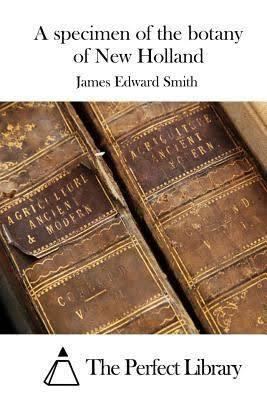Originally published 1793 | Publication date 1793 to 1795 (4 parts) | |
 | ||
Pages 40 text16 colour plates Botany books Flora Graeca, Flora Britannica, Botany in a Day, The Botany of Desire: A Plant's‑Ey, Botany for Gardeners: Third Edit | ||
A Specimen of the Botany of New Holland, also known by its standard abbreviation Spec. Bot. New Holland, was the first published book on the flora of Australia. Written by James Edward Smith and illustrated by James Sowerby, it was published by Sowerby in four parts between 1793 and 1795. It consists of 16 colour plates of paintings by Sowerby, mostly based on sketches by John White, and around 40 pages of accompanying text. It was presented as the first volume in a series, but no further volumes were released.
Contents
Book
The work began as a collaboration between Smith and George Shaw. Together they produced a two-part work entitled Zoology and Botany of New Holland, with each part containing two zoology plates and two botany plates, along with accompanying text. These appeared in 1793, although the publications themselves indicate 1794. The collaboration then ended, and Shaw went on to independently produce his Zoology of New Holland. Smith's contributions to Zoology and Botany of New Holland became the first two parts of A Specimen of the Botany of New Holland, a further two parts of which were issued in 1795.
Australian plants listed
The book contained details of the following Australian plants:
